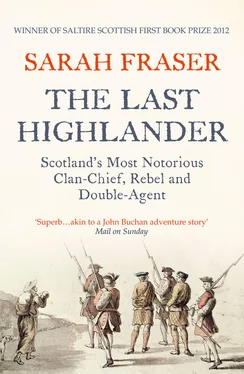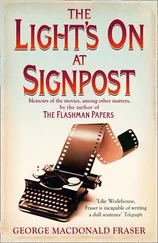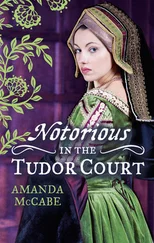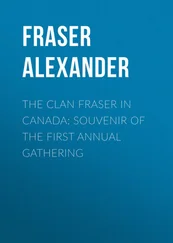Argyll murmured to William Carstares, a Presbyterian minister and one of the King’s most trusted confidants, that Tullibardine’s activities around Inverness threatened national security. If ‘Tullibardine be allowed to go on … it may occasion a deal of bloodshed; for if one begin, all the Highlands will in ten days fly together in arms … I am most particularly concerned in Highland affairs,’ he said. Simon Fraser had called on the right man to help him. The Frasers were historically ‘sword vassals’ of the Campbells. It meant that in exchange for protection by the bigger clan, the Frasers brought out their men to fight Campbell battles. To bring down Tullibardine’s over-mighty schemes to dominate Scottish politics, men who otherwise supported William’s rule would go into opposition.
Tullibardine did not meet with this growing barrage of criticism calmly. He was, said a contemporary, ‘endowed with good natural parts, tho’ by reason of his proud, imperious, haughty passionate temper, he was no ways capable to be the leading man of a party. He much affected popularity,’ but his ‘kindest addresses were never taking: he was selfish to a great degree, and his vanity and ambition extended so far, that he could not suffer an equal. He was reputed very brave, but hot and headstrong.’ He would destroy Simon Fraser.
At the end of the summer, Simon left Edinburgh. Scottish law had not been able to solve his problems and Simon struggled to see how the traditional path – a clan feud – might be avoided. Everyone feared a feud, ‘for Highland feuds never die’, as the Reverend James Fraser counselled him. If it came to a feud he could not see how he might expect to win. Over the last two decades the Murrays had amassed a regiment and a militia force of their own. Tullibardine, as King’s High Commissioner, enjoyed huge power over the courts and Parliament. If Simon provoked the Murrays, they would surely attack. In the end the solution seemed obvious. The two sides must be brought together. He and the heiress, young Amelia, must be contracted to marry. This was the path of peace.
In April 1697, Simon headed to Castle Dounie to negotiate with Hugh’s widow for the hand, at puberty, of the heiress Amelia. Tullibardine reacted immediately. He ordered the girl to be whisked from her mother, the dowager Lady Lovat, and be taken to his Perthshire stronghold, Blair Castle. Simon meanwhile moved into Castle Dounie itself and sent his father to a safehouse on the Lovat Stratherrick estates.
When Simon said of his kin that ‘the Highland clans did not consider themselves as bound by the letter of the law, like the inhabitants of the low country’ around Inverness, ‘but to a man would regard it as their honour and their boast, to cut the throat, or blow out the brains of anyone … who should dare to disturb the repose of their laird’, he had his Stratherrick clansmen in mind. High above Loch Ness, Stratherrick concealed itself and its people behind the trees and rocks scaling the steep slopes along the south shore of the loch. Fertile fields around lairds’ houses nurtured cattle and rigs of corn in a sea of moorland wilderness. The Frasers who lived there existed in accordance with the values of the clan system. Financially, they depended on a traditional chief of the sort Simon desired to be. The elderly Lord Lovat would be safe among these men.
From Dounie, the dowager Lady Lovat complained to her family: ‘Young Beaufort is still here and does not intend to go from this place till his own time. They are more obdurate than ever, and delude the people extremely.’ Simon, the chief’s son, felt that the chief’s son living in the chief’s stronghold was not delusional. The widow of a dead chief had to make room for the living one, or move to a dower house.
‘The neighbourhood are all knaves, and for him,’ the Marquis of Atholl growled when he read his daughter’s letters. It maddened him that they had failed to kill young Beaufort in Edinburgh when they had the chance. After seizing Amelia, Atholl wrote to the Fraser lairds advising them to trust him rather than rally to ‘Captain Fraser’. The old Marquis ‘would find out a true Fraser and a man of handsome fortune that would support their whole name’. This was a dangerous time for the Murrays. Removing young Amelia gave them possession of a serious claimant to the inheritance, but it removed her from the objects of her claim.
Simon was dismayed to find that some Fraser lairds from the rich low-lying country around Inverness were hesitating to enlist for him. Others, such as Robert Fraser and his brother – both lawyers – had thrown over the ties of clanship in order to advance themselves. Even they advised the Murrays it was a step too far not to bring in a Fraser as chief and suggested they could find an alternative within the impoverished Saltoun Frasers from along the coast towards Aberdeen. Simon cursed the two lawyers like an Old Testament prophet. ‘Robert, the prime author of these misfortunes, died under the visible judgement of God,’ he wrote. Robert’s brother ‘may yet be overtaken with the just punishment of his crimes’, he added hopefully.
The response Atholl received from the Highland lairds was unequivocal. They ‘would have no borrowed chief!’ Moreover, if Saltoun ‘dared to enter their country in hostility to Thomas, Lord Lovat … his head should answer the infringement … We have put on a full resolution to defend our lands, possessions, goods, lives, wives, children, liberties and privileges of free subjects which lie at the stake against all invading and insulting avaricious ambition and oppression pro aris et focis contra omnes mortalles.’ The judicial phrasing in Latin (suggesting Simon’s hand in it) sealed the threat of an old-fashioned Celtic clan feud.
The letter left Lord Saltoun windy about his venture into Lovat territories to arrange a marriage between his son and Amelia Lovat. He wrote to Simon, claiming disingenuously that he only desired to help arbitrate in the Murray–Fraser dispute. Simon thanked him, and suggested they meet. Lord Saltoun agreed.
At the end of September 1697, Saltoun and Lady Lovat’s youngest brother, Lord Mungo Murray, rode to Beauly. They looked forward to their time at Castle Dounie working out the details of a pre-nuptial agreement. They would hunt, dance and feast. The intention was then to go back via the Murray stronghold and celebrate the contract by letting the young people meet. Simon, meanwhile, hoped to dissuade Lord Saltoun from acting as go-between for Tullibardine’s schemes.
At daybreak, Simon and his lairds set out to rendezvous with Saltoun from the Stratherrick estates, where he had been enlisting gentlemen to his cause. As their party crossed the River Ness and headed west towards Dounie, ‘the inhabitants, observing their alert and spirited appearance lifted up their hands to heaven, and prayed God to prosper their enterprise’, Simon wrote. Dollery, Tullibardine’s recruiting agent, confirmed their support. ‘It is certain the generality of the country about Inverness favours’ Simon, Thomas and their followers, he told his master. ‘In the very town of Inverness I hear they call the young rogue the Master of Lovat.’ Even the professional classes were coming over to Simon’s side.
The party rode on with confidence. The Beauly Firth sparkled on the right as they entered the woods of Bunchrew, about three miles out of Inverness. Suddenly, one of Simon’s lairds noticed a group of ‘running footmen’ scampering out of the woods. These runners accompanied gentlemen of any standing, holding their stirrups as they mounted and dismounted; opening gates in their path; fording rivers and burns and leading the gentleman’s horse to steady its progress. Simon was shocked to see that they were followed by the Lords Saltoun and Mungo Murray and their tail of armed followers. Saltoun was very chatty, apparently ‘in great hopes to have his son [become] Lord Lovat when the girl was ripe’. Seeing and hearing all this, Simon erupted. He and Saltoun had arranged to meet that day to prevent this very thing. He, Simon, was the obvious candidate for young Amelia’s hand. The Lords were reneging on their agreement on every count.
Читать дальше












